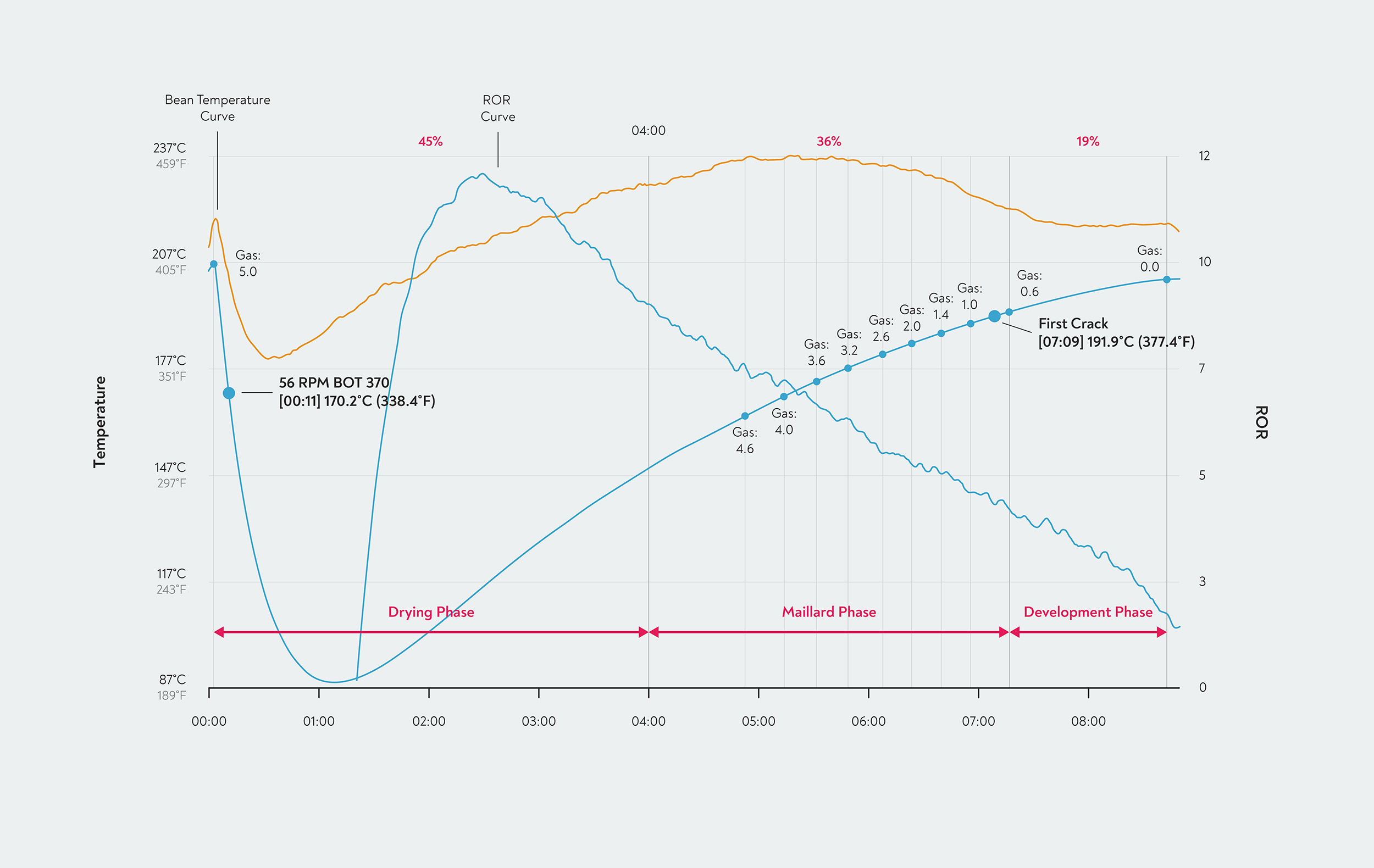Roasters commonly refer to three phases in their profiles: the drying phase, the Maillard phase, and the development phase. Unfortunately, the names of these phases are somewhat misleading.
The ‘drying phase’ refers to the time from the beginning of the roast until the beans begin to change colour, which happens when they reach about 150°C (300°F). This is supposedly the phase during which most of the moisture is driven out of the beans — but in reality, the beans release moisture steadily until shortly before first crack. To make matters murkier, the colour change that should mark the end of this phase, usually described as ‘yellowing’, doesn’t have a clear definition and is somewhat subjective.
The ‘Maillard phase’ refers to the time between yellowing and the onset of first crack. This phase is named for the Maillard reactions, a group of chemical reactions that give coffee a lot of its colour and flavour. Maillard reactions are not limited to the Maillard phase, however. They also occur during other stages of the roast — and they even take place slowly in green beans.
Finally the ‘development phase’ is the time from the beginning of first crack until the end of the roast. This term is also something of a misnomer because the entire roast curve, not just the final phase of the roast, contributes to a coffee’s development.
 The three roast phases. The ‘phase balance’, indicated by the percent values at the top of the graph, refers to the total roast time spent in each phase.
The three roast phases. The ‘phase balance’, indicated by the percent values at the top of the graph, refers to the total roast time spent in each phase.
Some roasters attempt to manipulate the proportion of the total roast time that a coffee spends in each phase — sometimes called the ‘phase balance’. For example, because the Maillard reactions are associated with many positive flavours in coffee, they might design their roast profiles to increase the amount of time spent in the Maillard phase. The benefits of this approach are doubtful because Maillard reactions are not limited to the ‘Maillard’ phase. Furthermore, it’s hard to change the length of one phase without affecting the other stages of the roast.